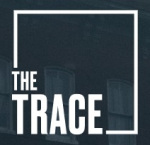If you find yourself in a discussion with someone who doesn’t think that gun violence is a problem, just refer them to Jennifer Mascia’s great article in The Trace where she aggregates the data for 2015. Or better yet, memorize some of her statistics and repeat them to the person with whom you are talking and if he doesn’t admit that we do have a gun violence problem, he can go lay brick. Because along with some very nifty graphics, Jennifer really does look at a variety of data points that clearly illustrate how far we still have to go to change a gun violence trend that shows little, if any signs of ending soon.
 Bottom line according to Ms. Mascia: 2015 is going to be a “bloody year.” And it’s not ‘mass shootings’ or domestic terrorist attacks that account for all that blood being spilled; it’s the day in, day out random shootings that claim two children every day, fifteen black men every day and more than 50 suicides every day. No wonder Trump and the other Republican clowns don’t want any more gun laws. After all, if you make it more difficult for people to get their hands on guns, thus making it more difficult for them to shoot themselves or someone else, you can kiss this particular form of American exceptionalism goodbye, right?
Bottom line according to Ms. Mascia: 2015 is going to be a “bloody year.” And it’s not ‘mass shootings’ or domestic terrorist attacks that account for all that blood being spilled; it’s the day in, day out random shootings that claim two children every day, fifteen black men every day and more than 50 suicides every day. No wonder Trump and the other Republican clowns don’t want any more gun laws. After all, if you make it more difficult for people to get their hands on guns, thus making it more difficult for them to shoot themselves or someone else, you can kiss this particular form of American exceptionalism goodbye, right?
But in looking at the numbers, I’m not so sure that our affinity for gun violence is necessarily an American problem. Because like so many other things, there are some remarkable regional variations in gun violence rates, and when you break the problem down on a regional basis, just as the numbers begin to change, so maybe the discussion about gun violence needs to change as well.
In 2005, according to the CDC, 30,694 Americans were killed by guns. This number covers every type of gun violence – homicide, suicide, unintentional injury – and it’s probably somewhat less than the real total but the CDC is as close as we can get (although the numbers from the CDC-Wonder database are slightly more accurate). In 2014 the total was 33,599 and estimates from the GVA folks point towards another increase this year. In 2005, the Southern census region accounted for 44% of all gun deaths; in 2014 the South accounted for 46%. The South, incidentally, is the only part of the country in which the percentage of gun deaths is higher than the percentage of the country’s population as a whole. Further, while the gun violence rate between 2005 and 2014 fell in the Northeast and the West and stayed just about even in the Midwest, in the South it rose by 4%. If gun violence is an exceptional American phenomenon, it’s particularly exceptional in the South.
There is one other category of gun violence which is remarkably exceptional in the South, and that’s when the shooter points the gun at himself. We can be gender-specific here because 90% of gun suicides are committed by men. And where do most of these events occur? In the South. In 2005, the South accounted for 44% of all gun suicides, it rose to 46% in 2014. Meanwhile, the percentage of gun suicides in every other region has not changed over the last ten years, even though on an overall basis, gun suicides now account for 65% of all suicides, whereas they were 40% of suicides in 2005.
I’m not sure why the South has such a love affair with gun violence, but if the Southern numbers on gun violence were similar to the rest of the country, America’s most exceptional social phenomenon would look very different indeed. And don’t make the mistake of thinking that the South’s exceptionalism just reflects the disparity in gun violence between Blacks and Whites. What is the only region of the country where the percentage of Whites killed by guns is higher than the percentage of Americans living in that region as a whole? Where else?
HAVE A HAPPY AND SAFE HOLIDAY AND IF YOU GO TO A PARTY, PLEASE LEAVE THE GUN AT HOME.
Dec 24, 2024 @ 12:58:41
Mike, have you looked at the suicide rate for Japan?